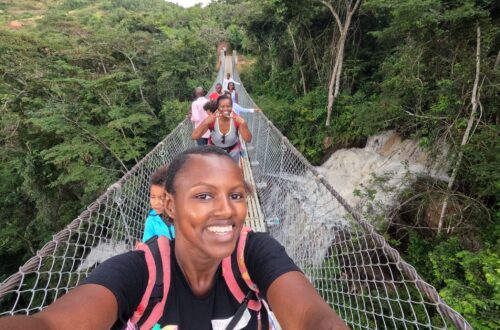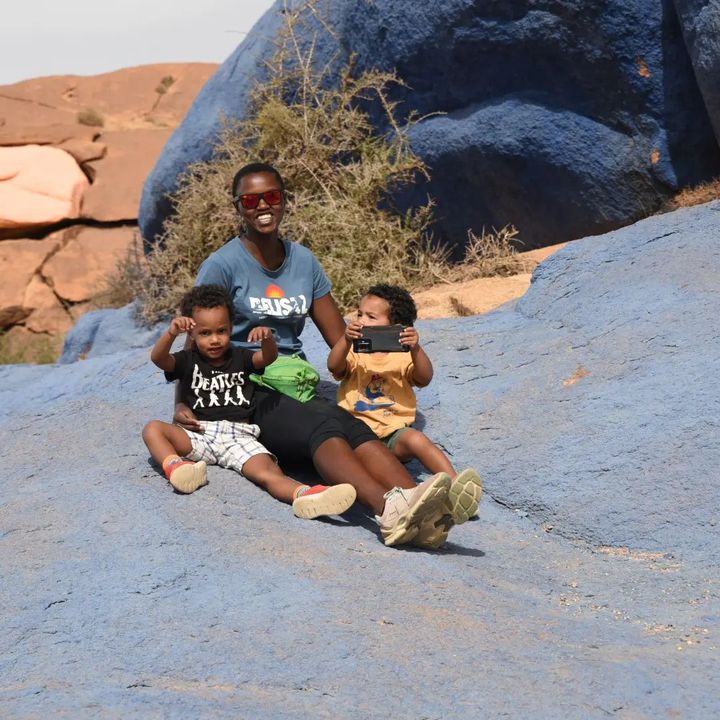
Places we visited in Morocco: 2) Tafraoute – The painted rocks
The 3 days in Agadir were enough for a break at the beach! Here we are on the road, ready to enjoy our stay in Morocco to the fullest!
The road from Agadir to Tafraoute was not that long. We took our time and stopped as soon as the opportunity arose whether to visit the small tourist sites indicated on the map or for a lunch in a village. Often this is not the best idea, as it can lead to disappointment from time to time. Just because the map shows that there is a tourist spot to visit in the vicinity, does not mean that there actually is one. This was the case when we went to visit the historic granary known as “Agadir Ikounka” which was a few kilometers from the main road. The place looked abandoned, although there was a sign indicating that it was there. Suddenly a local man approached us and offered to give us a tour of the granary. Once at the entrance, he realized that he was missing the keys to open the front door. In fact, the site manager was not there and he thought he was going to make a little money with the tourists. This made for a short break where the children had fun climbing the stairs supported by the ruined walls.


Back on the road, we didn’t miss the opportunity to stop and admire the small cactuses along the way. We could see the enthusiasm of the geographer in our midst as Stefan was so passionate about explaining the landscape around us as well as the geological formations along the way. Having never traveled in desert areas, I was impressed throughout the drive. Not only was the landscape something new to me, but the way of living of the people who inhabit these places fascinated me even more.
Little by little, we approached Tafraoute, when all of a sudden we came into a crowd. All along the road were plenty of people, one more well-dressed than the other. It was the day when Muslims gather for prayer; a very important day for Muslims, as it is the day that brings them the most blessings. It was a Friday evening and the festive spirit prevailed. It was also the market day because there was everything: the little corner where vegetables and fruits were sold, the grills for the kebabs, the traditional bread ovens, the jewelry and so on. A little tired, I didn’t really want to stop and get into the crowd. The idea of first finding a place to park as everything was full and then taking the children with us cut off all interest in being at the heart of the action. However, Stefan convinced me that I would not find such an opportunity anywhere else. It was a chance to feel the authentic atmosphere of Fridays, taste the grilled food, and eat freshly baked bread. That’s how we spent the evening in Sidi Abdeljabbar, a small village about 15 km from Tafraout.




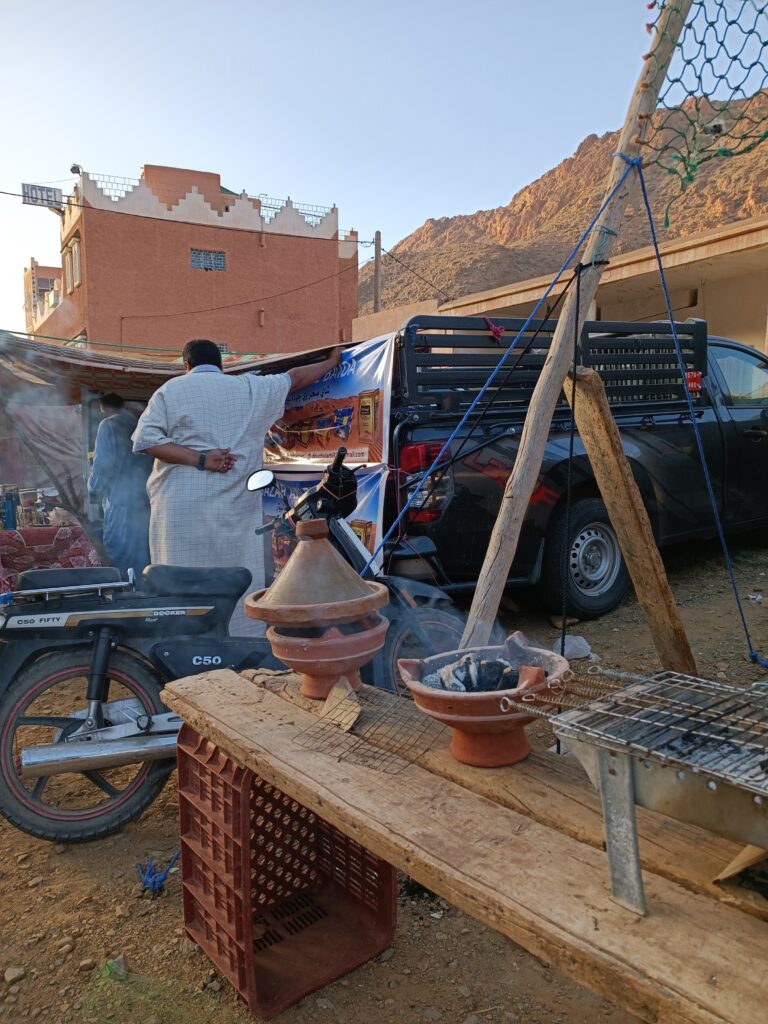

I later found out that the village is of great social importance. It is known for its mausoleum of Sidi Abdeljabbar which is an ancient architectural work. It is a real place of refuge offering many traders the opportunity to display their products (dates, henna, and jewelry) on their stalls. It also enables them to spread part of the local culture, in particular with the organization of a traditional Berber dance and music show, Ahwach. In the same way, the Moussem has an important social role, allowing families to meet to organize future weddings.
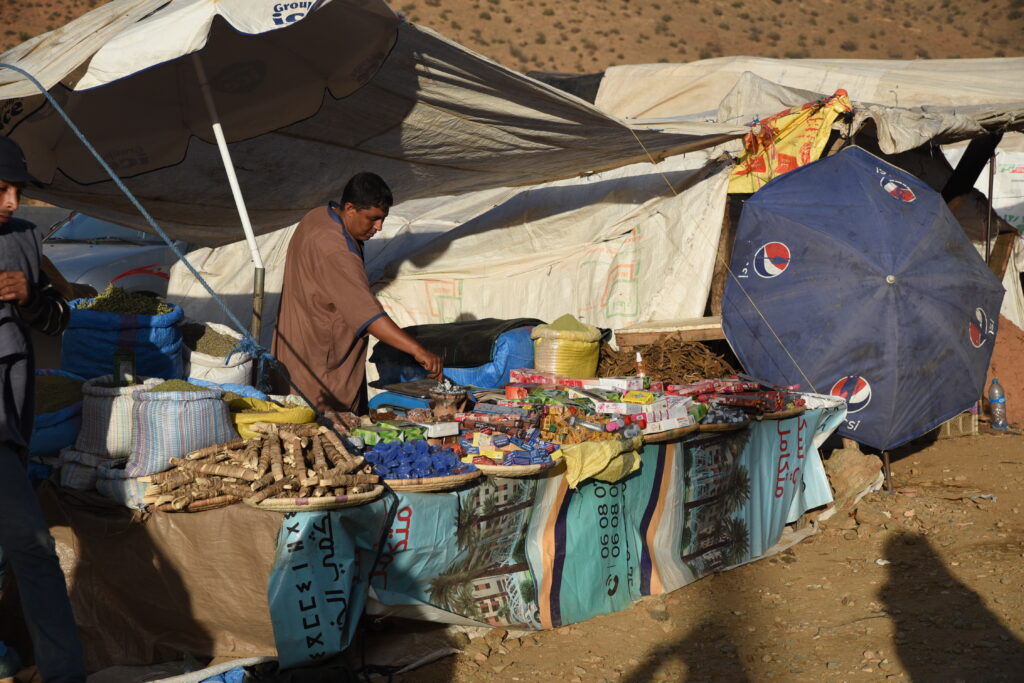
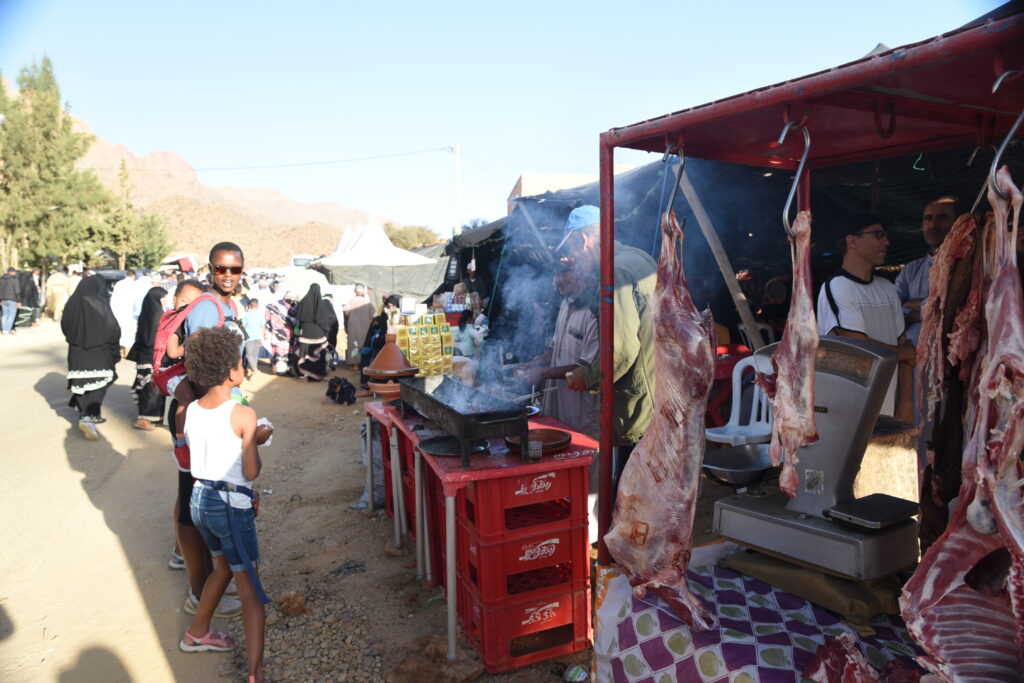


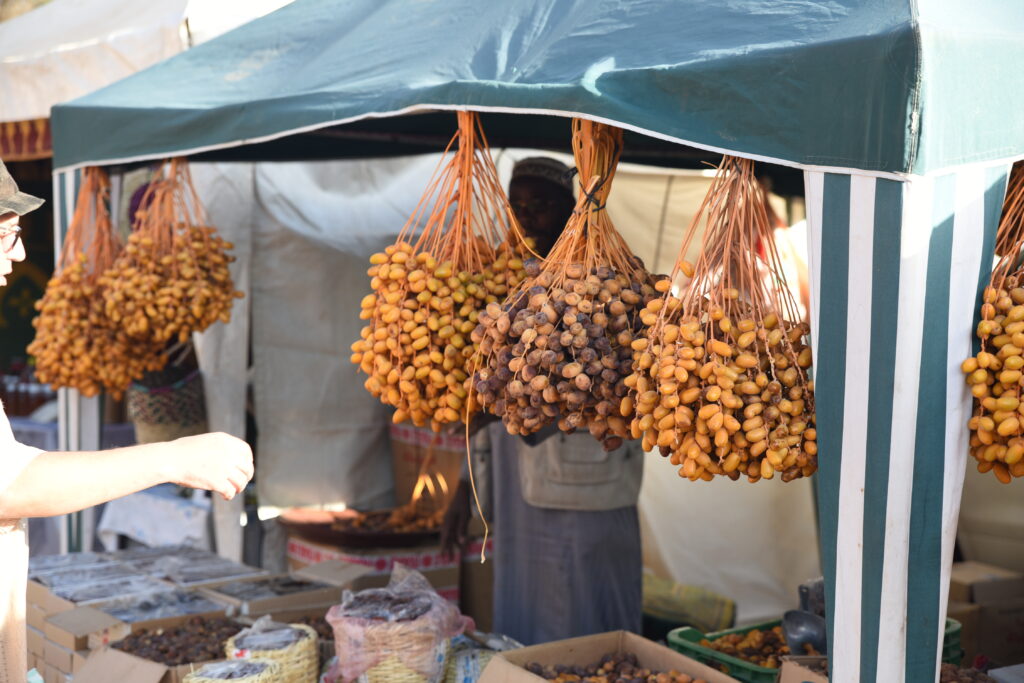

It was around 7 pm when we arrived in Tafraoute. We anticipated our tour by visiting almost all the hotels because we had not booked the accommodation. Uncertainty and curiosity about where we will sleep or which room we will find are part of our plan when we are on the road! We found a nice hotel in the village center that allowed Stefan and the girls to go out for a walk, while I stayed with the boys. The little ones would have liked to go out before bed too, but I was not really ready for that!


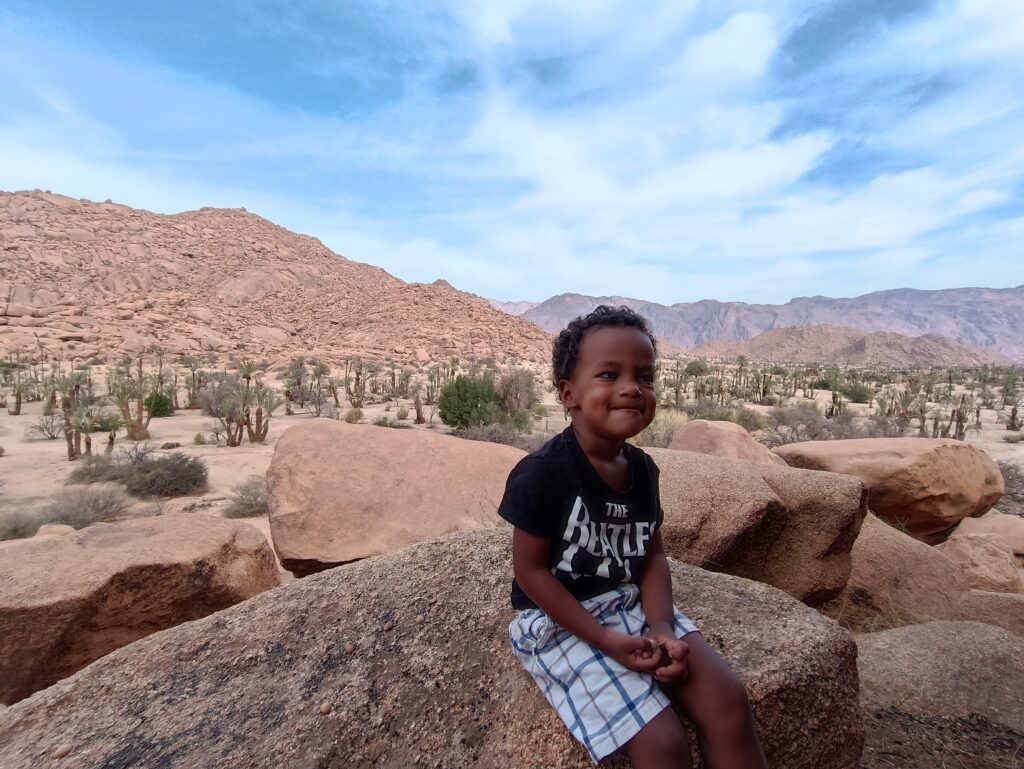

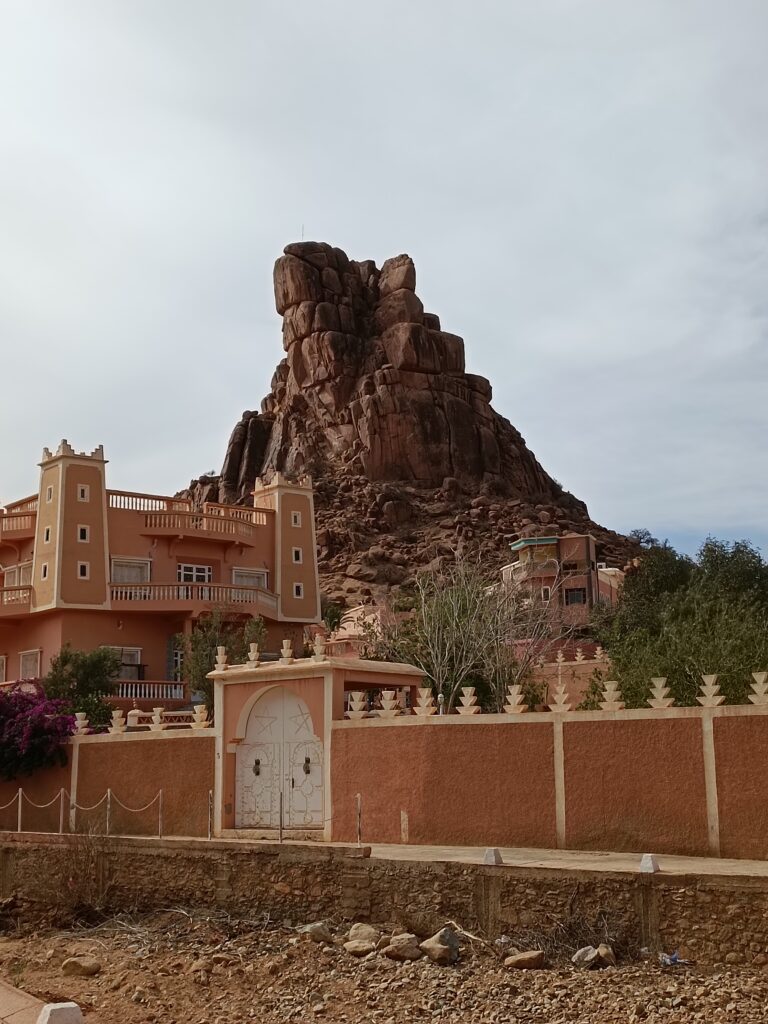
The night was short as I would have liked to sleep a little more, like every day. But we had to wake up and visit the surroundings before continuing further south. After an hour, we were on the rocks at the exit of Tafraoute. This gave us a taste of our next destination: the painted rocks! Painted in 1984 by the Belgian artist Jean Verame as a tribute to his late wife, these rocks have become a popular tourist attraction in the area. Some people would say that it is an interesting idea, out of the ordinary, even artistic while others like Stefan would say that they don’t know what to say about it. To argue that it’s a pity for all the paint that has been poured on the beautiful rocks in the middle of such a beautiful landscape that the arid desert offers.
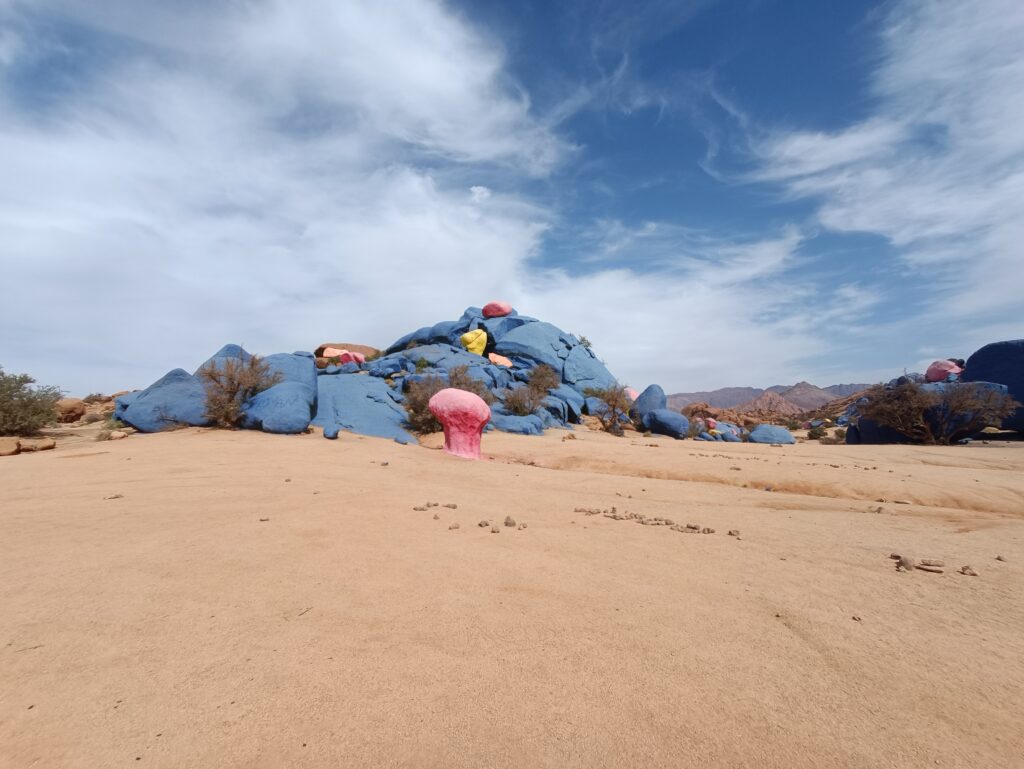

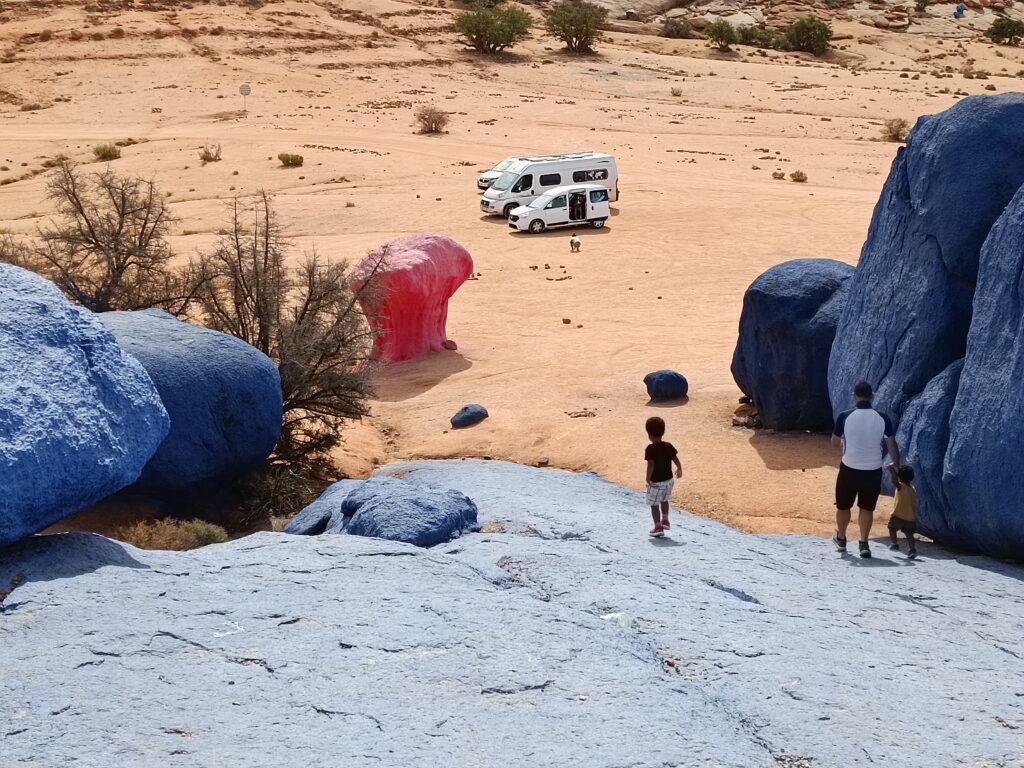
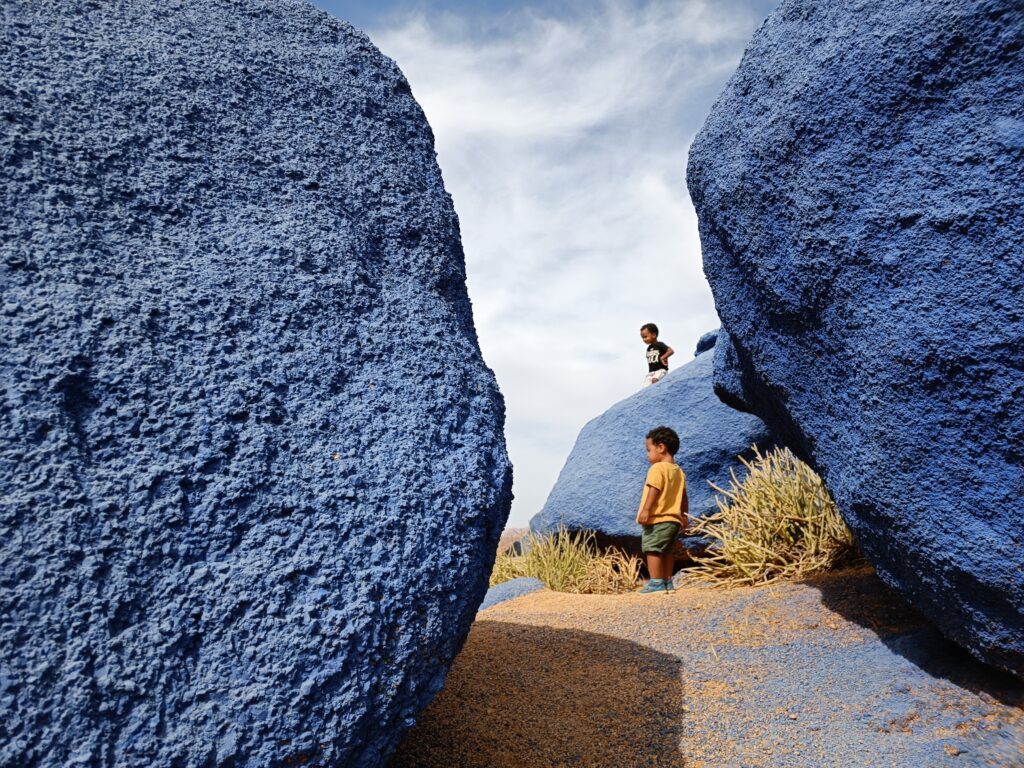
Indeed, it’s a bit difficult to think how many means they used to bring the 18 tons of blue, pink, red and black paint that were necessary to achieve this work! As for me, I would say that a little color doesn’t hurt anyone and I even have a tendency to love the atmosphere it creates. For the kids, it was like an amusement park. They had fun climbing to the highest rock.
So, what would you say about these painted rocks?




